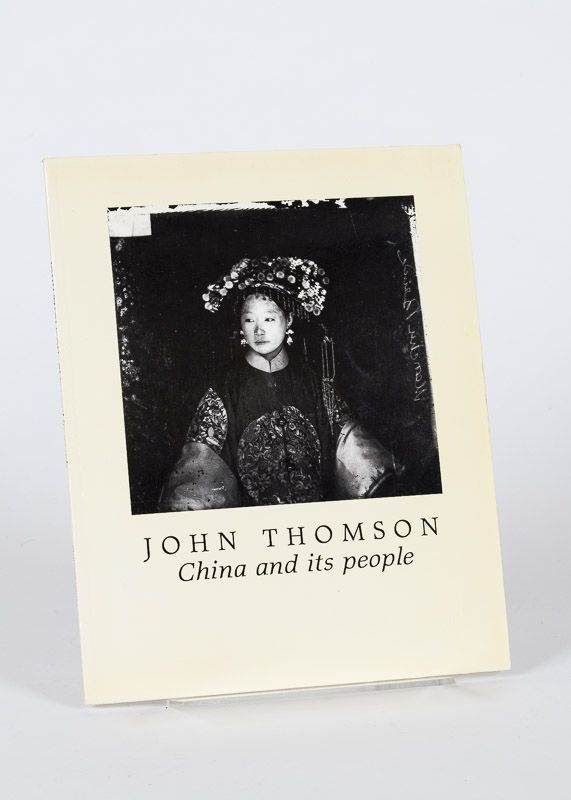Thomson, China and its People.
China and its People.
London, The British Council, 1991. 23.9 cm x 30 cm. 68 pages. With black and white illustrations. Original Softcover. Very good+ condition with only minor signs of external wear. Extremely Rare !
Includes for example the following John Thomson photographs: The Peak, Hong Kong 1868/1869 / A Hong Kong Artist 1868/1870 / Canton Child, South China 1868/1870 / Old Woman, Canton 1868/1870 / A Lady’s Maid, Canton 1868/1870 / Looking North From The Po Lo Hang Temple, Kwangtung 1869 / Chao-Chow Fu Bridge 1870/1871 / Overlaid Foot and Natural Foot Amoy 1871 / Foochow Field Woman 1871 / Shanghai Woman 1869 / Ming Tombs, Nanking 1871 / Artillery, Nanking 1871 / Upper Yangtze Boatmen 1871 / The Nankow Pass, North China Leading to The Great Wall 1871/1872 / Funeral Bannermen, Peking 1871/1872 / Manchu Bride, Peking 1871/1872 / A Mandarin and His Son, Peking 1871/1872 / Stone Camels, Road to the Ming Tombs, Near Peking 1871/1872 etc.
John Thomson (1837–1921) was a pioneering Scottish photographer, geographer, and traveller. He was one of the first photographers to travel to the Far East, documenting the people, landscapes and artefacts of eastern cultures. Thomson traveled extensively throughout China, from the southern trading ports of Hong Kong and Canton to the cities of Peking and Shanghai, to the Great Wall in the north, and deep into central China. From 1870 to 1871 he visited the Fukien region, travelling up the Min River by boat with the American Protestant missionary Reverend Justus Doolittle, and then visited Amoy and Swatow.
He went on to visit the island of Formosa (modern-day Taiwan) with the missionary Dr. James Laidlaw Maxwell, landing first in Takao in early April 1871. The pair visited the capital, Taiwanfu (now Tainan), before travelling on to the aboriginal villages on the west plains of the island. After leaving Formosa, Thomson spent the next three months travelling 3,000 miles up the Yangtze River, reaching Hupeh and Szechuan.
Thomson’s travels in China were often perilous, as he visited remote, almost unpopulated regions far inland. Most of the people he encountered had never seen a Westerner or camera before. His expeditions were also especially challenging because he had to transport his bulky wooden camera, many large, fragile glass plates, and potentially explosive chemicals. He photographed in a wide variety of conditions and often had to improvise because chemicals were difficult to acquire. His subject matter varied enormously: from humble beggars and street people to Mandarins, Princes and senior government officials; from remote monasteries to Imperial Palaces; from simple rural villages to magnificent landscapes. Upon returning home, his work among the street people of London cemented his reputation, and is regarded as a classic instance of social documentary which laid the foundations for photojournalism. He went on to become a portrait photographer of High Society in Mayfair, gaining the Royal Warrant in 1881. (Wikipedia)
- Keywords: Catalogue Six – Photography · China · China in Historical Photographs · Chinese Culture · Inanna Modern – Photography Books · PHOTOBOOKS · Photographs · Photographs of China · Photography · Photography – Rare · Photography Book
- Language: English
- ISBN: 0905788249
- Inventory Number: 200386AB
EUR 68,--
© 2025 Inanna Rare Books Ltd. | Powered by HESCOM-Software









